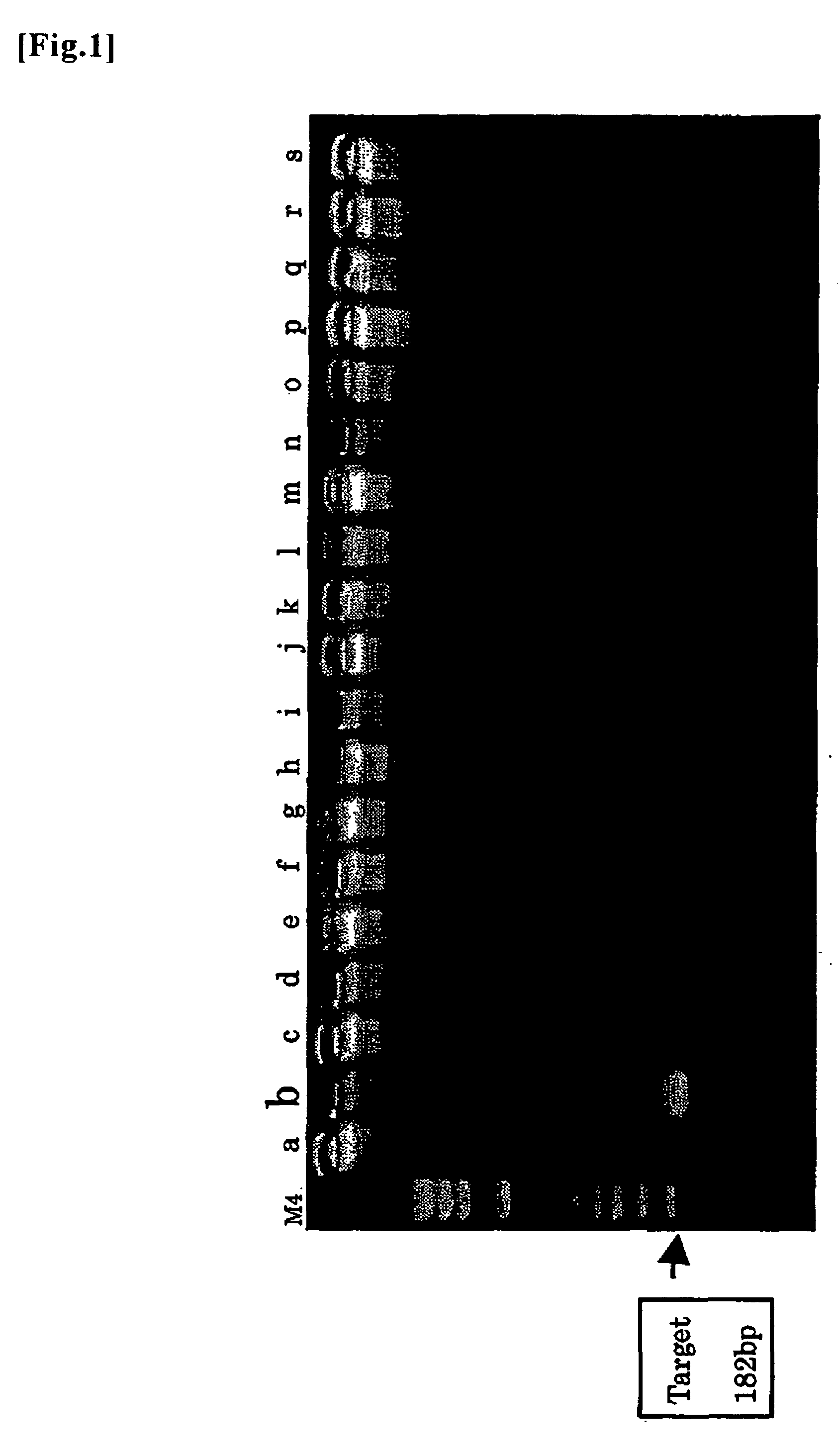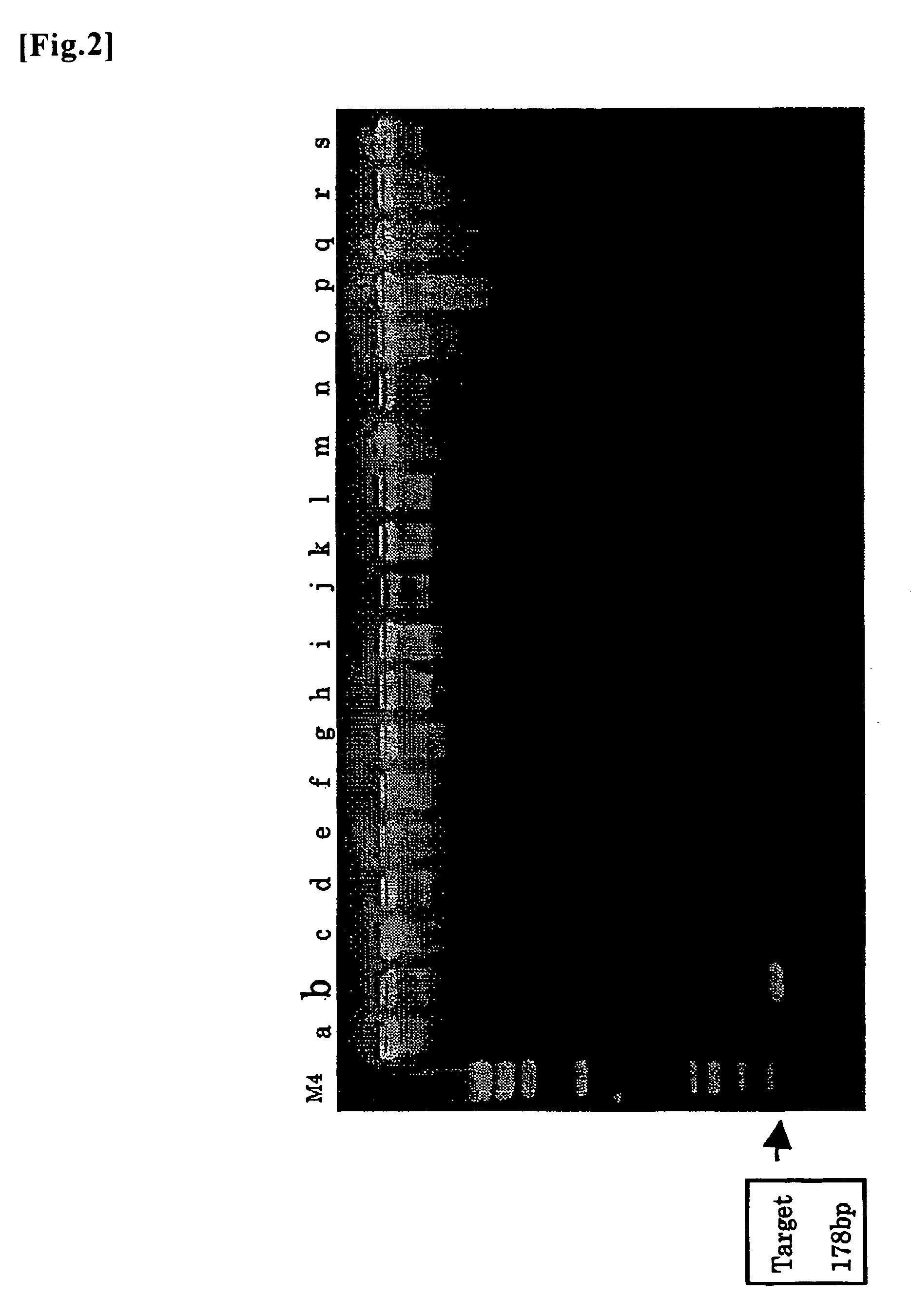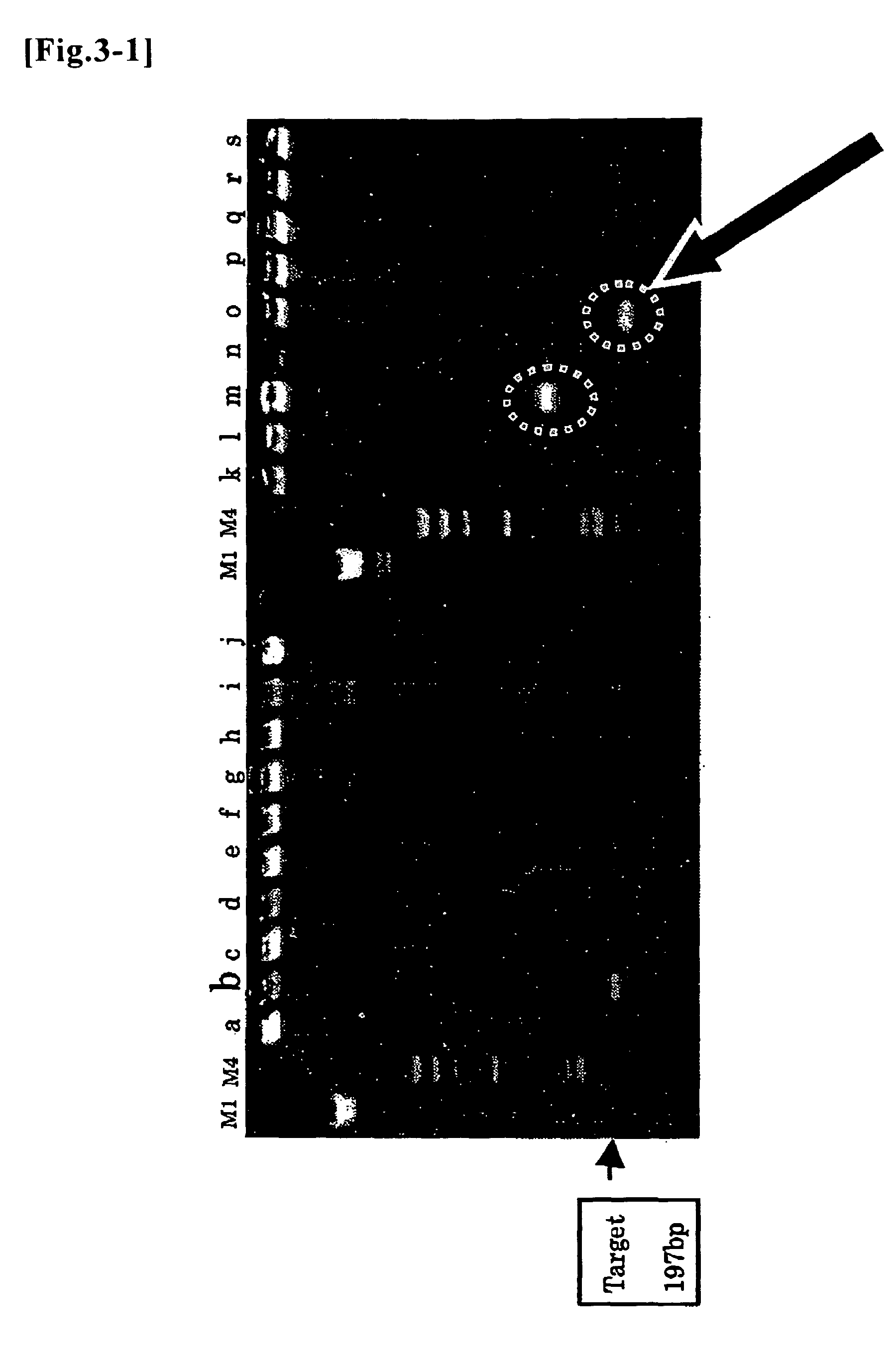Probe and primer for tubercle bacillus detection, and method of detecting human tubercle bacillus therewith
a technology of tuberculosis and probes, which is applied in the field of probes and primers for tuberculosis detection and human tuberculosis detection, can solve the problems of large time required for culture, recent serious problems, and inability to detect false positives, so as to achieve specific and precise detection of mycobacterium tuberculosis and diagnose false positives.
- Summary
- Abstract
- Description
- Claims
- Application Information
AI Technical Summary
Benefits of technology
Problems solved by technology
Method used
Image
Examples
example 1
(1) Synthesis of PCR Primer for Detecting Mycobacterium tuberculosis
[0154]An oligonucleotide having a sequence described in SEQ ID NO:2 (ACCTCACCTATGTGTCGACC, hereinafter designates as IS_F6) and an oligonucleotide having a sequence described in SEQ ID NO:4 (AACGTCTTTCAGGTCGAGTACG, hereinafter designates as IS_R6) were synthesized according to the phosphoamidite method by using ABI DNA synthesizer Type 392. The synthesis was conducted according to the procedure described in the manual of ABI Inc., and deprotection of each type of the oligonucleotides was performed by the method of heating an aqueous ammonia solution of the oligonucleotide at 55° C. overnight. Subsequently, the synthesized oligonucleotides were purified using anion-exchange column chromatography with HFPLC from Pharmacia Corp.
(2) Preparation of Samples
[0155]Using the bacteria shown hereinbelow, DNA was extracted and purified by the following methods to obtain DNA samples. All bacteria were clinical isolates, and the...
example 2
(1) Synthesis of PCR Primer for Detecting Mycobacterium tuberculosis
[0171]An oligonucleotide having the sequence described in SEQ ID NO:1 (TGGGTAGCAGACCTCACCTAT, hereinafter designates as IS_F5) and an oligonucleotide having the sequence described in SEQ ID NO:3 (CGAGTACGCTTTCTTGTTGG, hereinafter designates as IS_R5) were synthesized by the same method as in Example 1 using the same equipment as in Example 1.
(2) Preparation of Samples
[0172]DNA samples obtained in Example 1 (2) were used.
(3) PCR
[0173]IS_F5 prepared in the above (1) was used as the forward primer, and IS_R5 prepared in the above (1) was used as the reverse primer, and PCR was performed as described hereinbelow.
[0174]Firstly, 10 mM of Tris-HCl (pH 8.9) buffer containing 1 μM each of the primer IS_F5 and the primer IS_R5, 1.5 mM of MgCl2, 80 mM of KCl, 500 μg / mL of BSA, 0.1% of sodium cholate, 0.1% of Triton X-100, 0.2 mM each of dATP, dCTP, dGTP and dTTP, and 40 units / mL of Taq DNA polymerase (Nippon Gene Co. Ltd.) wa...
example 3
Detection of Mycobacterium tuberculosis by Real Time PCR Amplification System
(1) Synthesis of PCR Primer for Detecting Mycobacterium tuberculosis
[0198]Oligonucleotides of IS_F5 and IS_R5 were synthesized by the same method as in Example 1 using the same equipment as in Example 1 (1).
(2) Preparation of Probe for Detecting Mycobacterium tuberculosis
[0199]A sequence of “ACCGACGCCTACGCTCGCAG” for utilizing as the probe was designed from the oligonucleotide sequence of SEQ ID NO:6 which would be amplified by PCR using IS_F5 and IS_R5 as the primer, and then the oligonucleotide having this sequence was synthesized (hereinafter designates as IS_F5R5_FANTAM, SEQ ID NO:11). The reporter dye FAM was linked to 5′-terminal of this oligonucleotide and the reporter quencher TAMRA was linked to 3′-terminal to obtain a labeled oligonucleotide probe (TaqMan™ fluorescent labeled probe, Applied Biosystems Japan Inc.).
(3) Preparation of DNA Sample for PCR
[0200]With regard to the DNA sample obtained f...
PUM
| Property | Measurement | Unit |
|---|---|---|
| time | aaaaa | aaaaa |
| time | aaaaa | aaaaa |
| pH | aaaaa | aaaaa |
Abstract
Description
Claims
Application Information
 Login to View More
Login to View More - R&D
- Intellectual Property
- Life Sciences
- Materials
- Tech Scout
- Unparalleled Data Quality
- Higher Quality Content
- 60% Fewer Hallucinations
Browse by: Latest US Patents, China's latest patents, Technical Efficacy Thesaurus, Application Domain, Technology Topic, Popular Technical Reports.
© 2025 PatSnap. All rights reserved.Legal|Privacy policy|Modern Slavery Act Transparency Statement|Sitemap|About US| Contact US: help@patsnap.com



